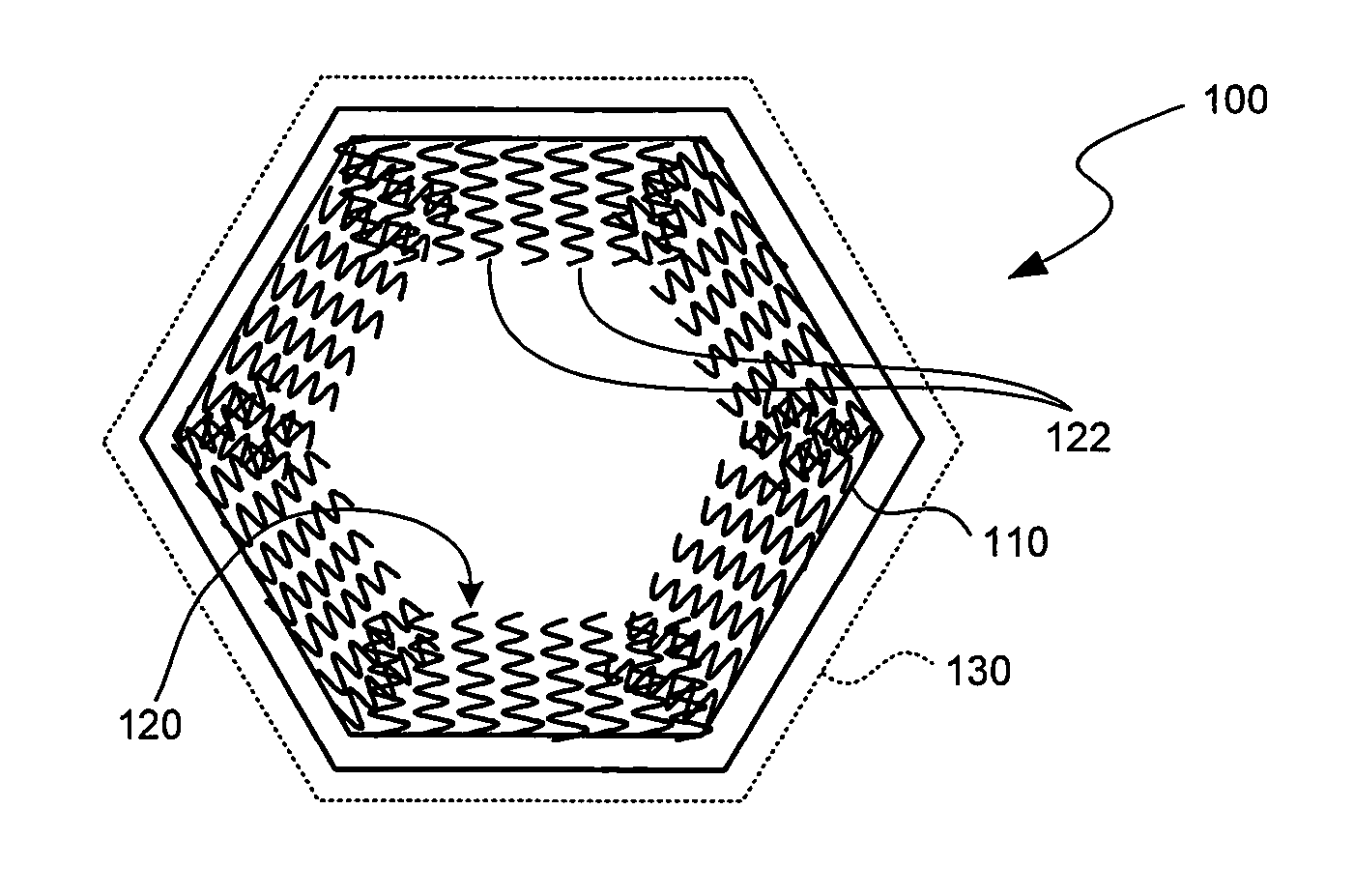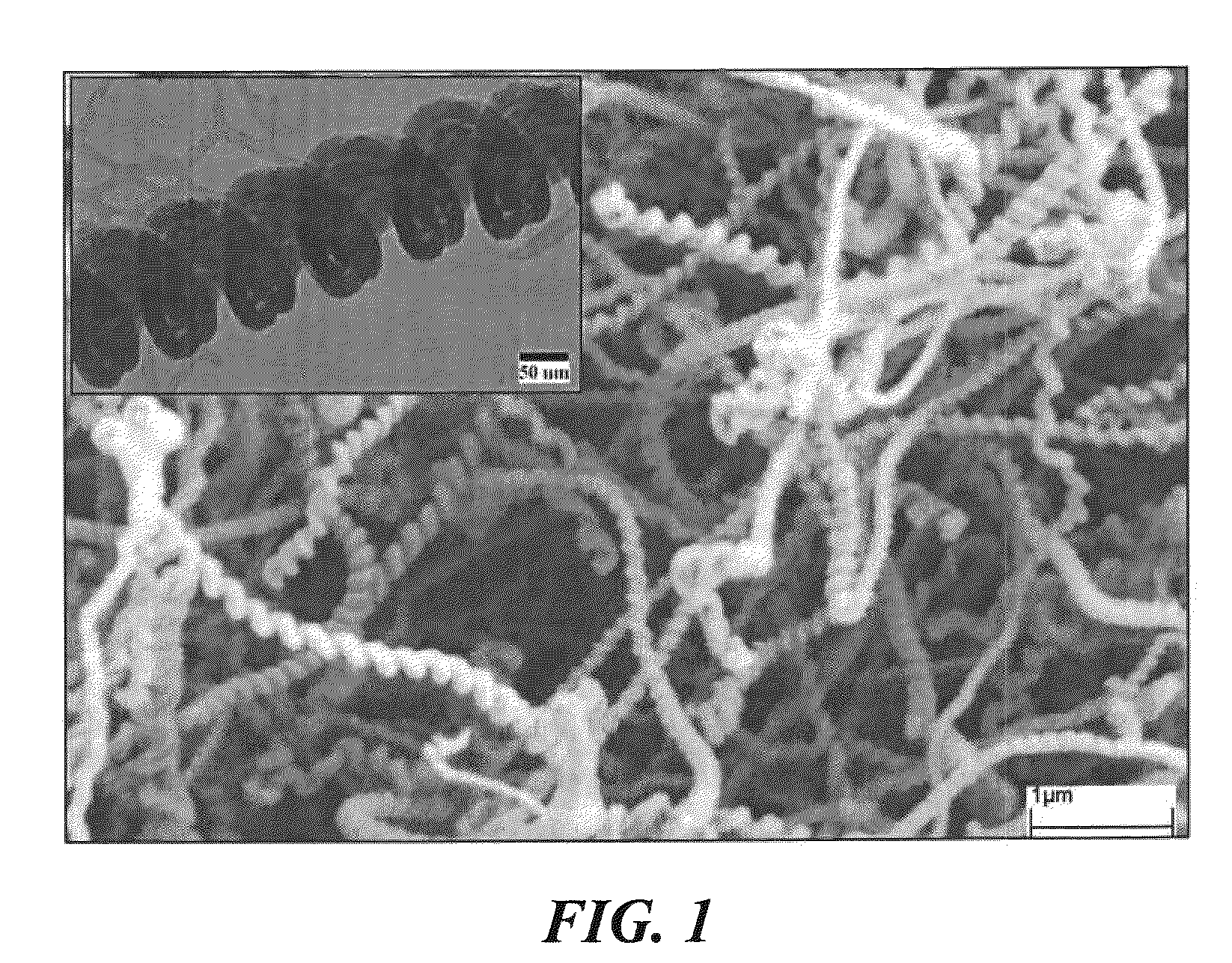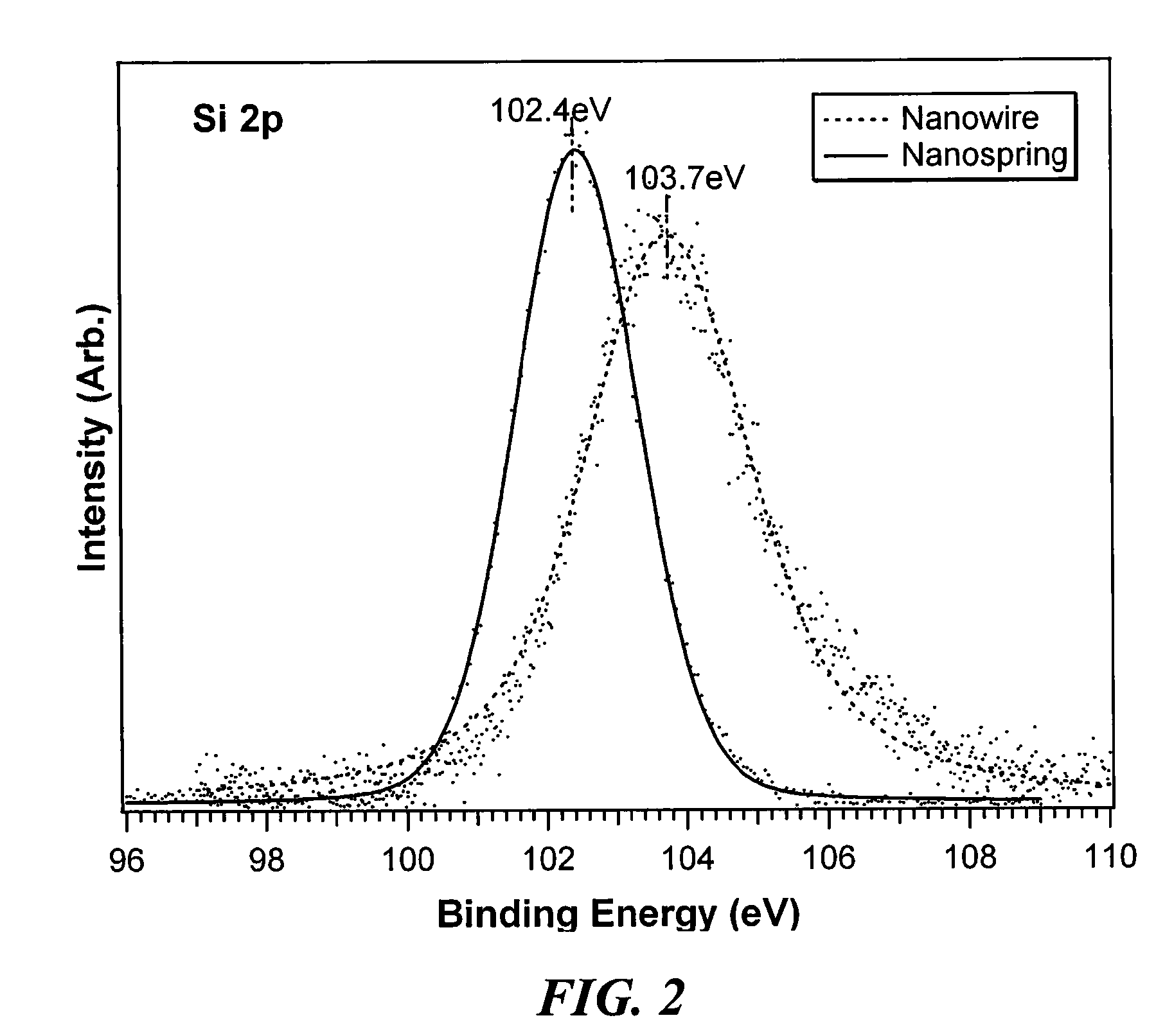Apparatus with high surface area nanostructures for hydrogen storage, and methods of storing hydrogen
a technology of hydrogen storage and nanostructure, which is applied in the direction of mechanical apparatus, other chemical processes, separation processes, etc., can solve the problems of inapplicability, inapplicability, and inability to meet the requirements of high-pressure hydrogen storage for such applications, and achieves the effects of not being practical in many applications, not being practicable, and not being practicabl
- Summary
- Abstract
- Description
- Claims
- Application Information
AI Technical Summary
Problems solved by technology
Method used
Image
Examples
Embodiment Construction
A. Overview
[0015]In International Application No. PCT / US06 / 024435 the present inventors described methods to grow nanostructures onto the surface of substrate materials. The nanostructures formed by these methods can have several different compositions and be used in many different applications. Several embodiments of the present invention are directed to nanostructures composed of glass, ceramic and / or ceramic oxide materials to store or sequester hydrogen. The nanostructures can be formed on a substrate according to one or more of the methods disclosed in International Application No. PCT / US06 / 024435. In several embodiments, one aspect of the nanostructures is that they provide controlled, reversible multilayered hydrogen adsorption.
[0016]Several methods disclosed in International Application No. PCT / US06 / 024435 can be used to produce at least substantially continuous mats of nanostructures (‘nanostructure mats’) on substrate surfaces. The nanostructures can comprise either nanosp...
PUM
| Property | Measurement | Unit |
|---|---|---|
| temperature | aaaaa | aaaaa |
| temperatures | aaaaa | aaaaa |
| temperatures | aaaaa | aaaaa |
Abstract
Description
Claims
Application Information
 Login to View More
Login to View More - R&D
- Intellectual Property
- Life Sciences
- Materials
- Tech Scout
- Unparalleled Data Quality
- Higher Quality Content
- 60% Fewer Hallucinations
Browse by: Latest US Patents, China's latest patents, Technical Efficacy Thesaurus, Application Domain, Technology Topic, Popular Technical Reports.
© 2025 PatSnap. All rights reserved.Legal|Privacy policy|Modern Slavery Act Transparency Statement|Sitemap|About US| Contact US: help@patsnap.com



